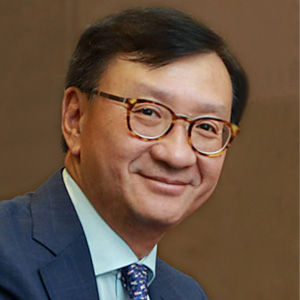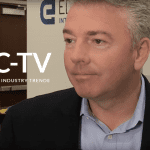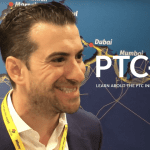 Stephen Ho, CITIC Telecom CPC CEO, outlines how CEOs should think about innovation
Stephen Ho, CITIC Telecom CPC CEO, outlines how CEOs should think about innovation
 Stephen Ho
Stephen Ho
CEO
CITIC Telecom International CPC Limited
“If there’s a rule for chief executives around the world in this dynamic industry, it’s that digital transformation means more than just being digital,” declares Stephen Ho, CEO of CITIC Telecom CPC, a major Hong Kong based international services provider.
After being at the helm of the company for nearly two decades, he has come to reflect on how we should use innovation in business, what customer service and digital transformation should really mean, and how they are ultimately tied together.
Take any new technology wave as an example. He says one of the key problems companies face is perception; the technology may not look truly disruptive in the early stages, but the resulting change may be exponential. He suggests that successive technology introductions from digital mobile to digital TV have shown this to be the case. He contends, “We may understand the technology, but often we don’t understand the implications and disruptive force of it.”
This myopia, he says, can often lead to missed opportunity. Worse still, some businesses face extinction as a result of refusing to acknowledge and embrace the change at hand. Some critical insights—call them rules for the new era—need to be drawn up as we now head into the next disruptive wave.
Rule #1: Look for enabling business models in a time of disruption
The iPhone is an overarching example of this. Mr. Ho explains, “It is not the technology required to build an iPhone that was ultimately its most important feature. [Other major manufacturers at the time] possessed comparable technology and expertise, after all. However, the iPhone came with an enabling business model, and it was the business model that was really the change.” The conclusion that must be drawn, he maintains, is “to use the innovation in the context of an enabling business model.”
So, the logic is to detect and exploit the enabling business model for both suppliers and customers. For suppliers, this means seeing the enabling of different types of business environment and business models, utilizing different types of digital technology to bring customer business to the next level. He reflects in doing this, “the business becomes like a jigsaw puzzle,” noting that transferring these insights into practicality is one of his own major tasks as chief executive.
Many disruptive players already do this intuitively or explicitly, typically taking advantage of networks as a key enabler, in each sector. There are many examples, particularly like Airbnb, that have essentially made a disruptive market entry by utilizing network power, indicating service providers should see themselves as providing enabling platforms for a given customer.
Rule #2: Connect the enabling platform to a customer service perspective
In this, there needs to be a connection to customer service. Mr. Ho explains, “Because of investment constraints, we needed to be an asset light company, and could not afford the timescale of rolling out big infrastructure projects.” The question then becomes, he inquires, “What is at the heart of a sustainable business model for providers like ourselves?” He states, “I decided to switch to service as a competitive strategy and make service the No 1 consideration. We identified that as an opportunity for us.”
Therefore, the next question is, “How are we going to provide a world class service?”
The answer he identified, was focus: “We only serve the B2B market, particularly those customers with multi territorial requirements. They are running businesses where they believe ICT capability is mission critical. Therefore, we utilize the technology as a platform to bundle the technologies to the benefit of the customer to construct that criticality.” He emphasizes, “In our case, CPC [as a company] doesn’t innovate in technology, but we use technology to innovate service applications, so we can construct the enabler.”
Rule #3: Learn from the customer
Ideally, it becomes a partnership model [between supplier and customer], yet it represents a challenge on any service provider: “We have to be running fast,” Mr. Ho declares. “Different sectors will have their own recipe of doing business. But what happens at the customer supplier interface is complicated. It is critical and needs tools to monitor but ultimately defines the success of both businesses.” He continues, “The ultimate partnership is that you can be part of [their business], and the supplier gains both learning and trust from the customer.”
This learning can grow to be very sophisticated. Ideally, service providers are an integral factor in the improvement of the internal processes of their customers over time. “If we look at a big name in manufacturing, for example Dell, much effort is expended on reducing the supply chain, cycle times, and eliminating mistakes,” he asserts. Similarly, service providers should respond to this and seek to support efforts to eliminate inefficiency, wastage, and redundancy.
Service providers are beginning to face many aspects of this. One of the CPC customers, he remarks, is a major online educational provider that emphasizes its own customer service as a competitive edge. As part of that, in the event of a service outage, full fee refunds are automatically available to learners. The focus then is on ensuring the internal process has very high uptime; the onus is on the provider to ensure that.
Rule #4: See and evaluate the emerging opportunities (and worries)
The focus on customer service and service quality is the first stage, Mr. Ho affirms. The next step after making service the top priority is to ask, “Where does that lead us?” This is the growth phase, he denotes, “You need to have a model to grow that enterprise into a larger one.”
In his view, it is to follow the customer, “We follow where the customer wants to go; we need to be driven by customers.” He continues, “The global footprint depends on the customer activity. In our case, we have been able to grow into a greater area in Asia where the network can be interconnected. More opportunities in other regions followed later.”
This should also be a questioning phase for chief executives. He remarks, “I ask: What is my customer thinking? Are they expanding here, or there? Where am I going to invest [as a consequence]? They may say they want to become more efficient or cut their own costs. My management response is: What does this mean? Where is it taking place? Should I invest there?”
Customer preoccupations provide another clue. “Again, it was worry [in] our customer base that stimulated our entry into security and cloud computing services that we now offer. I tend to focus on the customers that worry about something and ask what it is.” The other key ingredient, he reflects, is to position a suitable market entry: “Everything is about timing, I look at everything from a timing perspective; emerging products can be pioneering but fail because of the timing aspect.”
As you move globally, he says, the focus should be on evaluating available opportunities, analyzed in both the macro and the micro environment. “If you want to run a company, what is in the global environment that will affect your business?” He continues, “The risk can be enormous, especially with today’s geopolitical considerations. If my next decision is a wrong one, I am going to pay for it.”
But change is what matters in this new digitally transformed, disruptive space. He concludes, “It is only through change that the opportunity arises. That is, for me, a deep belief. We [must] see the change in the world – and see it positively.”
In a time of unprecedented dynamism that may be his extra, unwritten rule.




